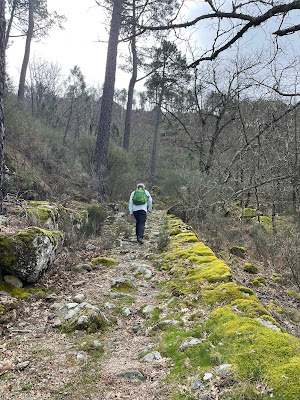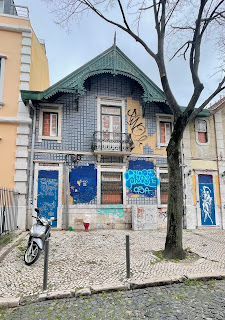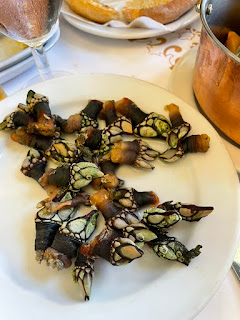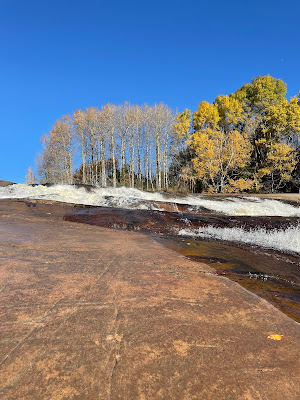We leave Nairobi. Martin has come to pick us up in an eight-seater jeep.
It’s morning rush hour but we are leaving the city so the traffic flows. There are people everywhere. Pedestrians circulating on every bit of green beside and between the highways. Small motorcycles, solo riders, milk crates full of live chickens strapped four high on the back, couples with a baby bundled in a blanket between them, blasé passengers in flip-flops watching the world go by. Ten-wheeled trucks, taxis with dashboards lined with fluorescent shag carpet, hundreds of matatus (VW van-sized buses) that go back and forth from the city to the country and everywhere in between. Passengers stand on the side of the highway and hail them down, piling large bundles on the roof rack. Four rows of people sit behind the driver — officially 12 passengers but usually 16, half leaning forward or with one arm out the window to make room for one other. A very affordable way of getting around, Martin tells us a two-hour trip from Nairobi to the countryside costs 600 Kenyan shillings (about 4$).
On the outskirts of Nairobi, shops have beds and other rough wooden furniture out on display in the red dust, tree nurseries, rows and rows of soursop, lime, orange, tree tomato, mango, banana, papaya seedlings growing in feedbags. The concrete block buildings are pink and neon green, bright yellow, pink. A riot of clashing colours that somehow works. Billboards tell us how to get closer to God. There are 4,000 named churches in Kenya. Each tribe leans a different way. Catholic and Anglican dominate but the pentecostal and evangelical churches abound. Martin tells us that, with their tax-free status, everyone is recognizing what money-makers churches can be and is getting on board. Freshly-painted fences are all sponsored by paint companies — “If you like it, Crown it”. Eucalyptus stands everywhere. Then wispy jacaranda and squat coffee bushes as we get further from the capital. Fruit stands built with lashed together bamboo, the roof a frayed tarpaulin, a sun-bleached feed bag or a scrap of corrugated tin roof that has long lost its colour. Each town seems to have its produce of choice — this town’s stands sell red onions, narrow mesh bags dangling from the roof. In the next town, all the vendors stand behind tidy piles of mangoes. The next village has oranges. Cows graze on the verge. A shoebill, a four-foot tall heron with a beak that could double as a man’s dress shoe, wanders around in a field looking like a time-traveller from prehistory. Euphorbia candelabra, cactus bushes the size of apple trees, announce the foothills of the Aberdare Range as the landscape turns into rolling hills.
We drive into the National Forest, through an electrified rhino fence manned by a man in uniform and then along a single track that weaves through old growth forest before turning into a compound of cedar cabins tucked in among the trees.
Martin and Nickson take us for a walk in the woods. Martin walks ahead, very quietly, the sole and straps of his sandals fashioned from bald car tires. He carries a long stick of well-polished olive wood, the end a big knot smoothed to a perfect ball. He explains that it is the stick carried by members of his tribe, the Kalenjin, pastoralists who keep sheep, goats and cows. He has a wife, a four-year old and an eight-month old who he sees once a month when he returns to his village on his days off.

Further along, a group of baboons grunt as they catch sight of us. They run a distance away, then perch on downed trees with their backs turned. They glance over their shoulders, watchful, bodies ready to flee but not wanting to expend energy unnecessarily. They know how close is too close. Giant cedars tower over us, their ropey trunks twisting skyward. It would take several people with arms outstretched to encircle their massive trunks. The woods, draped in Old Man’s Beard, a wispy pale-green moss, have a somewhat sinister feel.
We find a crimson feather with black tips belonging to a Hartlaub’s turaco, a big blue and green bird whose feathers flash red in flight. Elephant poop, like little keg-shaped clumps of fermenting straw is scattered everywhere. Thankfully none are very fresh. When we have walked in the Kenyan bush before, our guide always had a big shotgun slung over his shoulder. Martin only carries his herding stick.
Tree hyrax make a racket all night. An ancient forest draped in gauzy moss in the deep dark of the night. Invisible creatures screeching bloodcurdling screams above us. It feels a bit like a scene out of Jurassic Park. The kind of noise that makes stepping out onto the balcony feel like an act of bravery, despite the fact that hyraxes are basically big guinea pigs.
The bull elephant comes for a visit to the clearing. His hide made by an unskilled upholsterer. Too much material for the job with wrinkles across the forehead and back, sags below the belly and excess gathered into untidy rumples above the tail and knees. The ridge of the spine looks like the rib of rocks that cut across the meadow on our walk. Despite his size, his legs hang in such a dainty way. He puts his feet down so slowly it’s like he’s tiptoeing. It looks like his knees are halfway up his thighs and his ankles are in the middle of his shins. He must be lonely, this herd animal shunned by his family. Despite the fact that young males are nursed longer than their female siblings, once they hit their teenage years they are sent out on their own because their newfound testosterone makes them unpredictable and they’re seen as a threat to the new cubs. He hangs out with the cattle, pushing them around but maybe secretly enjoying their company. This bull will probably spend another fifteen years maturing before he can start competing for the right to mate; only to go back to being alone once the job is done. He spends a lot of time backing up, as if not quite sure where his feet are. His trunk gropes around on the ground, grabs a bunch of soil and salt and tosses it into his mouth.
We get an early start the next day for a hike up Satima Mountain, the third highest peak in Kenya. We bounce up the rutted road in a jeep, with Martin at the wheel, into a clearing at the beginning of the trail. Mercy, Nickson and Joseph are our guides. Long-legged Mercy sets the pace at the front, minuscule backpack strapped to her back. Slow and steady. Joseph and Nickson pull up the rear. I listen to them chat away in Swahili interspersed with technical words in English. Joseph acknowledges Nickson with a long string of Ehs (like the sound of E in bend.) The tone rises or falls, quiet or with surprise but it seems to be the perfect, universal response. Some of the Swahili words sound like the little Portuguese I learned in Lisbon. Nickson tells me Swahili borrows a lot from Arabic and also to some extent Portuguese, English and German, adapted to do business on the East African Coast. He tells me that Kenyans of his generation never really learned how to pronounce English words properly, that there were no phonetics at school, which is why his “book” sounds like “bok”. His son’s generation, he tells me proudly, is getting a completely different education.
Hunter’s Cisticolas, little chubby, brown birds sing to us along the trail. Their song rises and falls, repetitive and insistent like a car alarm. They know that where humans pass, crumbs are left behind so they follow. Swallows dip and dash around the big rocks. Buzzard-eagles soar overhead. When we get to the peak, long-legged Moorland Chats perch a few feet away, swinging their heads side to side as they eye our sandwiches. Mt. Kenya is off in the distance, blanketed in a big poof of white clouds. It is so perfectly quiet. The trails are dusty. The rainy season is coming. Soon, all the dry grass will be a lush sea of green. The air thick with bugs and birds and life.
Driving back to camp we catch a glimpse of a lone Colobus monkey on the side of the road. We’ve obviously spotted him as he is about to cross. He lands on his two back feet, one of his hands holding the tree from which he just leapt, his long fur sways. A coiled spring, ready to leap back into the trees. He peers at us with his big eyes. We back up to get a better look but he is long gone.
After dinner, Eva, the lodge manager, grabs a flashlight and runs away from the house into the dark. Her flashlight swings back and forth as she dashes back. Elephants are in the clearing. Lots of them. Go to the viewing platform, she says, I’ll turn the light on for a bit. We walk down toward the trail and climb the steps to a huge deck wrapped around five big cedars about twenty feet off the ground. From here we look down onto where Eva scatters salt for the local wildlife. It’s hard to explain the depth of the dark here. With no moon, you cannot see your hand in front of your face. At first we can only hear low rumbling and shuffling but, as our eyes adjust, the massive shapes emerge from the gloom. Eva hits the light and there they are. More than a dozen elephants right beneath us. It looks like several distinct family groups, as they seem to keep a certain respectful distance from each other. Mothers and their babies. The very little ones are irresistible, weaving in between their mom’s legs, tugging on their siblings’ tails and trunks. They’ve kicked up a lot of dust as they sift through the dirt for the salt so, despite the light, the image is eerily soft-focus, massive grey shapes wandering in and out of view. As my eyes adjust to the dark I see more and more approach. I count 22 in all. Grunts and huffs and what sounds like someone blowing bubbles in the bottom of a glass (whether this is coming from a trunk or a backside I’m not sure). The pecking order becomes obvious. The matriarch, whose tusks are longer than me, moves very little but everyone seems to give her a wide berth. A young male wanders around the periphery, occasionally trying to make a little foray into the group but is quickly chased away by a mother. Some of the ground has been washed out, leaving deep ruts between mounds of red soil. The elephants step into the ruts and use the lumps as scratching posts, rubbing their bums back and forth or straddling the mounds and giving themselves a good belly scratch. There is some jostling for the best spot. The matriarch trumpets, scolding the kids and telling them to settle down.
We fall asleep to the sound of the tree hyraxes shrieking.


































